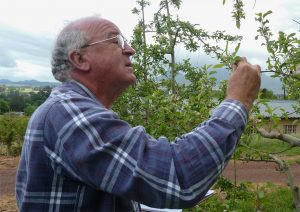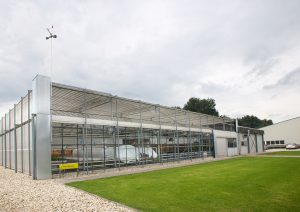
Fruit-fly expert calls for new policies
Detection data should inform regulation. By Engela Duvenage.
An ominous anniversary of sorts was celebrated on 5 June 2019 when Prof. James Carey from the Department of Entomology and Nematology at the University of California, Davis gave an overview of the Californian fruit fly problem at the Hortgro Technical Symposium.
Carey told the audience how, on the same date 39 years earlier, California’s fruit fly eradication programme started in earnest. It followed the first ever major Mediterranean fruit fly outbreak over thousands of hectares in northern and southern California. Even though more than US$ 280 million has since been spent, Carey believes there is no light at the end of the tunnel.
Carey is worried that current policies do not adequately consider risks and probabilities in light of future climate change scenarios. He finds current policies archaic, since most were developed more than fifty years ago, and have not kept up with recent research findings.
Reintroduced or established?
Fruit flies have only been detected in three American states: Florida, Texas, and California. More species — 17 — have been detected in California than in the other states combined.
In a recent paper, Carey and colleagues challenged the long-held notion that new fruit fly populations are continually being introduced to California, for instance through ports and airports. They called this explanation inconceivable when the historical detection data are applied to the theory.
“If repeated outbreaks are due to reintroductions, then such events should also occur in other parts of California and fly-friendly regions of the US. It doesn’t happen. Fruit flies are nearly always captured in the same regions, year after year,” he explained. “This raises questions, yet the position of the United States Department of Agriculture and the California Department of Food and Agriculture is that insects are reintroduced every year.”
He said that such a stance might have the short-term benefit of being able to pronounce an area free of fruit flies when they have been absent for a few generations. However, in the long term, it does not address the very real possibility that populations are firmly established in California, or that micro-populations go undetected for generations until again causing outbreaks.
“You cannot legislate a fly out of existence. We need to adapt eradication programmes accordingly,” stated Carey, who for nearly a decade served on America’s fruit fly scientific advisory panel.
He believes urgent policy changes should take cognisance of available data showing when and where fruit flies have been trapped over the years, as well as evidence that populations have become established. “Current policies are uninformed by detection data. They are ad hoc and static. They do not really consider the challenges of growers who are simply expected to adhere to regulatory protocols.”
Using data to drive decisions
Carey finds it astounding that so little is done with data meticulously gathered between 1950 and 2018 about when and where fruit flies have been trapped in the US.
“No one uses the data. It is unbelievable to me,” said Carey, who estimates that the government-sponsored surveillance programme has over the years cost more than a billion dollars. According to Carey, there are 10 000 fruit fly records in the database, but it is not available to scientists.
Carey believes databases should be used to assign outbreak risk that is useful to growers, and to inform government surveillance strategies. The data could also help reveal shortcomings in eradication protocols, including for how long an outbreak region should be subject to regulations such as treatment and monitoring.
Carey stated that the single most important reason for examining the fruit fly detection data is to base decisions on evidence. “The results of data analysis help move decision-making by stakeholders and policy makers from the realm of intuition and uncertainty to the domain of risk management.”
Carey questioned the definitions used by the US authorities and the International Phytosanitary Commission to decide whether fruit fly populations are eradicated or not. He also challenged the binary approach of classifying the suitability of produce for the export market only according to whether flies are fully eradicated in an area or not.
“Such determinations are virtually impossible to make based on the results of short-term monitoring,” Carey concluded. Instead, he advocates for policies in which risk is graded and reflects the history and frequency of local outbreaks.
Bonus: Carey’s advice to the South African deciduous fruit industry
- Policies should be evidence-based according to data and adapted as and when new information becomes available.
- Basic science should inform policy and be integrated into it. Make use of the invasion biologists of stature working at Stellenbosch University and at other South African institutions.
- Policy forums need to not only update current policies but thoroughly reconceive many of them.
Do more research about the ability of micro-populations to go undetected for decades and then to cause outbreaks.






